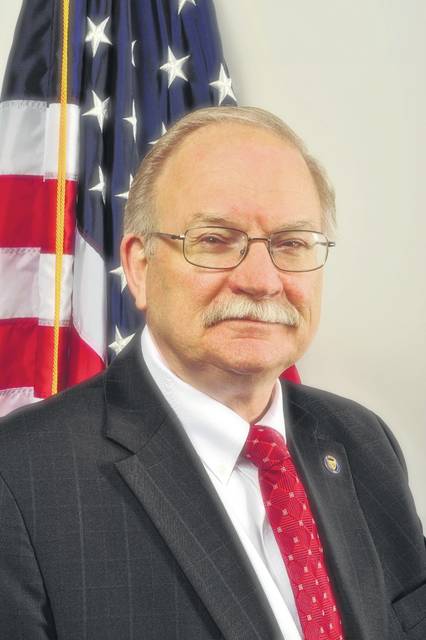
For some years, I’ve been working on an Encyclopedia of Sidney History. I had intended to have it finished in time for Sidney’s Bicentennial, but as time passed, other things seemed more important, and it remains an unfinished work. However, I continue to work on revising existing entries, working on new ones, and with some help, researching archives in an attempt to eventually finish.
Unfortunately, as the research continues, the number of new entries increases. There is a continual rediscovering of things long forgotten. When those new potential entries emerge that seem important enough to include, they require additional research and in the midst of that new research, still more potential entries for the encyclopedia emerge.
A couple of weeks ago, an article was uncovered that reminds me of a French epigram: “Plus ca change, plus c’est la même chose.” First used by Jean-Baptiste Alphonse Karr in 1849, translated literally the sentence means “The more things change, the more they stay the same.”
To illustrate my point, I’m going to reprint a news article printed in the July 24, 1891, issue of The Sidney Journal, one of the newspapers published in Sidney at that time. The headline read: “Wanted – A House”.
“Probably Sidney never saw the time when there was so great a demand for dwelling houses as just now. It is a gratifying sign, however, that real estate owners appreciate the situation, and a movement is on foot among them which will result in the building of 50 houses in the next 60 days. It is proposed to pool the capital necessary and assess the expense according to benefits. The advantages of this plan are at once apparent. The purchase of materials in so large a quantity as will be necessary will procure the lowest prices to be had. An architect will be employed, and a variety of modern designs will result.”
“The movement crystalized into a meeting held at the office of the People’s Savings and Loan Association on Thursday evening. There were present Colonel H. Wilson, J.C. Royon, William Wagner, John Laughlin, Frank Hunter, James Anderson, and L.M. Studevant. Colonel Wilson called the meeting to order and stated its object. He said Sidney was confronted with a condition; that if the town continued to thrive, as it was hoped by all that it would, the owners of real estate must meet and overcome the emergency. Houses were needed, and some body must build them.”
“By a cooperative plan it was thought a great savings could be made in the purchase of materials and at the same time obtain a variety of artistic designs. For instance, one man could build five houses cheaper than one, principally for the reason that they would all be alike. By the cooperation plan each of five builders could take one each of five designs, and the monotony of tenement rows avoided. It is intended to build only two story houses, and at a cost which will permit them to be rented at $5 to $10 per month. Others had opinions to offer, generally, in the main purpose, agreeing with the plan here given. Colonel Wilson was appointed a committee of one to draw a paper for the signatures of those who would enter the house combination.”
About thirteen decades later, a similar meeting was held at the library during which local stakeholders again came together to discuss a number of concerns, including the need for additional housing. From that meeting there emerged a new version of “the house combination”, namely Ferguson Construction CEO Mick Given, former Freshway Foods Co-owner and On-Point Concepts Principal Phil Gilardi, and McDonalds Restaurants Owner-Operator Ben Scott.
Together they teamed with Ryan Homes to build approximately 225 single-family homes in the Burr Oak Subdivision. Also planned as part of the Burr Oak Subdivision are approximately 400 multi-family units.
In addition to Burr Oak, other developers are currently working to construct an additional 523 multi-family units and another developer has purchased eight lots for infill housing within the city on which single family homes will be constructed.
As readers may know, Sidney has more manufacturing jobs per capita than any other municipality in Ohio. According to statistics provided by the United States Department of Labor, more than 11,000 people come into Sidney each work day to fill jobs here. It goes without saying that many of those individuals would prefer to live in Sidney rather than endure the daily commute.
With additional jobs being created (there are estimates that SEMCORP alone may require more than 1,000 additional workers), it is obvious that the need for additional housing across all price ranges is both immediate and long-term.
Sidney has a lot to attract residents. Perhaps most importantly, Sidney is a safe community. As I travel, safety is more and more a topic people talk about. Our park system includes parks within walking distance for all our residents. Continued efforts to expand the recreational trail system and connectivity to the nation’s largest paved trail network will only improve recreational activities
We have a variety of dining options, with more yet to come. The library provides access to a varied collection of traditional reading materials as well as eBooks, digital audiobooks, digital magazines and video. Gateway Arts Council and Raise the Roof for the Arts provide a variety of cultural activities. We have good roads, bridges, and infrastructure. Sidney has good schools. We also have more than three dozen religious denominations whose houses of worship welcome worshipers.
For Sidney to continue to grow and prosper, we need to continue to encourage development. That certainly includes construction of residential units, including both single-family homes and multi-family options. Just as was the case more than a century ago – we could simply say: “Wanted-A House!”
The writer is a member of Sidney City Council.

